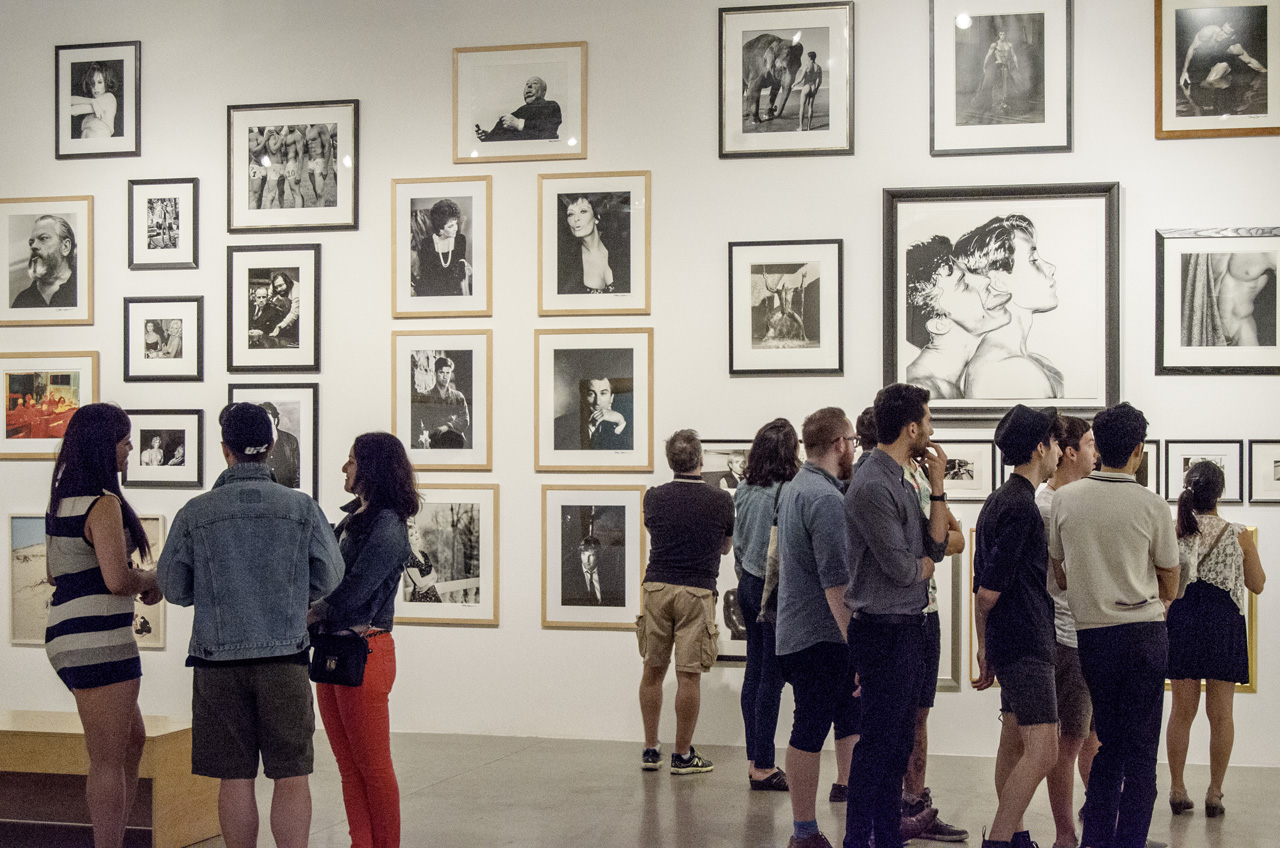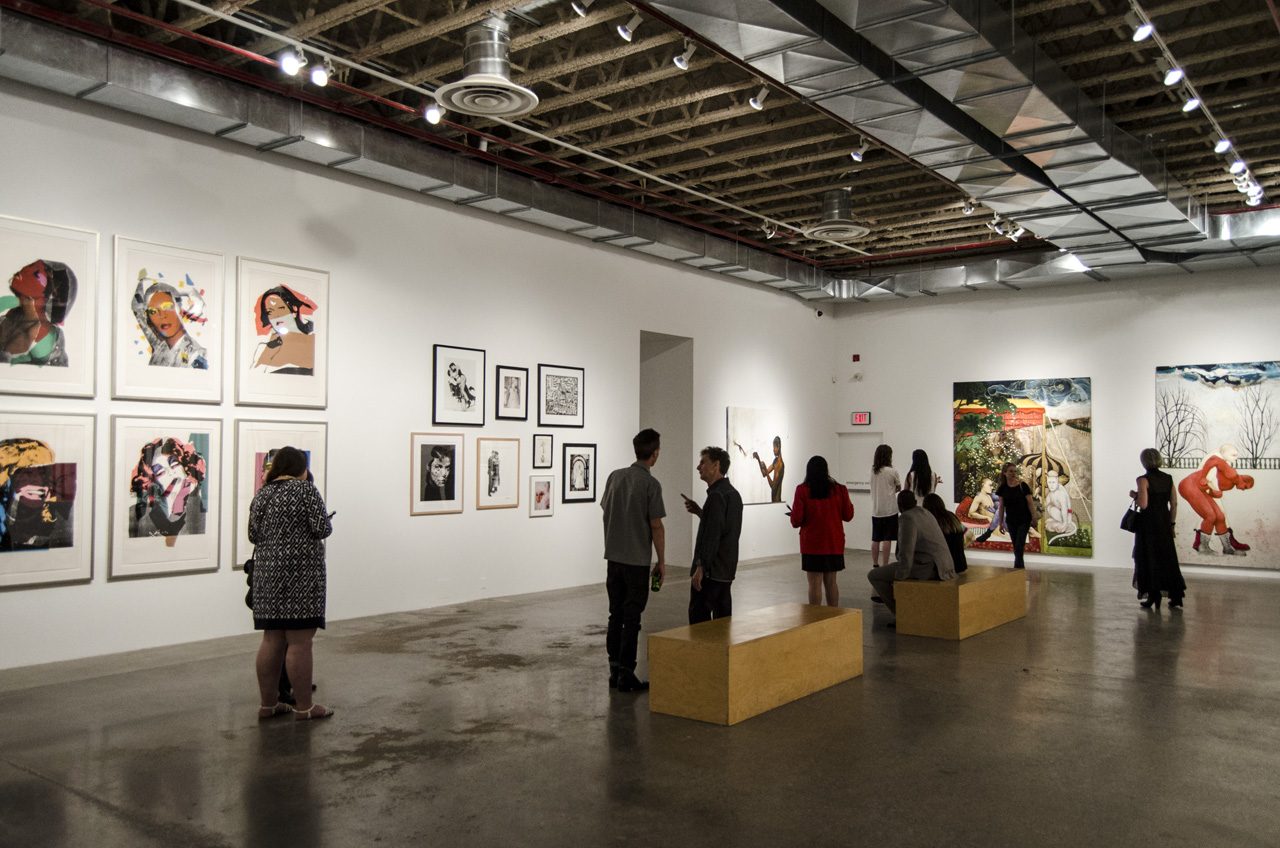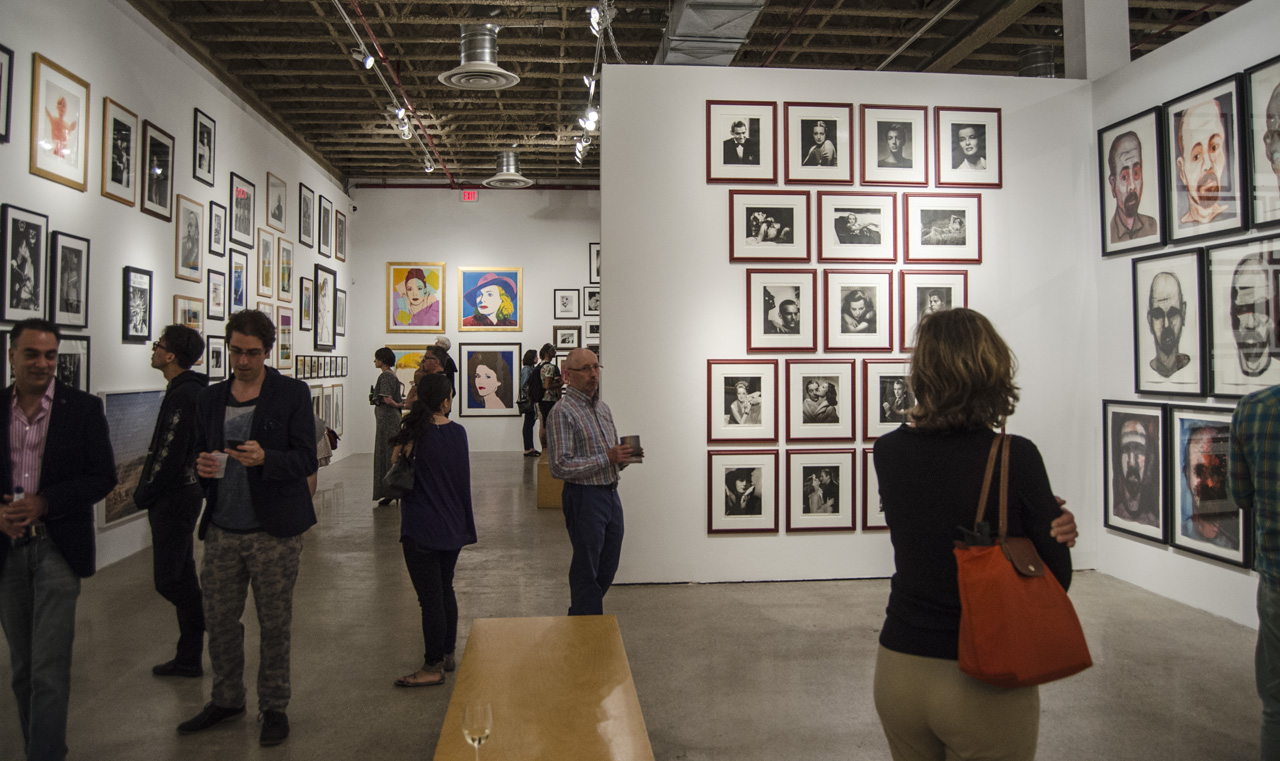As part of World Pride held in Toronto this summer, the Museum of Contemporary Canadian Art presents a compelling exhibition – selected from the collection of Salah Bachir and Jacob Yerex – that explores the themes of identity and sensuality. Displaying an eclectic selection of works by both queer and heterosexual artists the show is interested in stereotypes commonly associated with queer culture, but also transcends them to deliver a powerful account of a universally shared human experience.
 Installation view with Andy Warhol, Muhammad Ali, 1978.
Installation view with Andy Warhol, Muhammad Ali, 1978.
Inspired by ideals of solidarity, diversity and pride, symbolized in the Rainbow Flag, the exhibition not only questions heteronormativity and creates a space that recognizes and celebrates diversity, but also breaks away from the categorization that sometimes restrict such artistic exploration. Pieces permeated with a search for identity also address universal themes such as love, seduction, mortality, and decay.
 Installation view with Andy Fabo, The Mnemonic Series (Michael), 2004-05.
Installation view with Andy Fabo, The Mnemonic Series (Michael), 2004-05.
The Mnemonic Series (Michael) by Andy Fabo stands out as one of those powerful works that record the fragility and transient condition of man. Composed of some twenty portraits of the artist’s partner, drawn from memory, this personal piece refers directly to the HIV/AIDs crisis that stroke the gay community worldwide, and raises questions about memories and how people’s energy is kept in the world after they pass away. The repetition of the subject brings a new dimension to the topics of decay and mortality, as it hints at the proliferation of images experienced in the digital age and how we are haunted by visual residues left by departed ones.
Similarly arresting, a series of celebrities’ portraits by photographers such as Annie Leibovitz, George Hurrell, and Greg Gorman, as well as Pop artist Andy Warhol, also explores the notion of denial of mortality through visual records. These now iconic portraits reflect upon how identities are constructed, through self-conscious presentation but also through artistic collaboration. The number and variety of this collection introduces a sense of global identity, and addresses more directly the theme of seduction through the representation of the eroticized body.
 Installation view with Stephen Andrews, Apostles, 1998.
Installation view with Stephen Andrews, Apostles, 1998.
The Apostles by Stephen Andrews also offers an interesting approach to the theme of identity and sensuality. Characterized by the artist’s interest in biblical narrative, this series of twelve portraits of young men was sourced in 1950s and 1960s gay pornography, with, however, a new focus on the facial features of the sitters that ease the sexual nature of the original material. The anonymity of the models depicted complicates their representation, and the knowledge that most of them were likely heterosexuals that posed for gay magazines adds a new layer to the concept of queer identity.
 Installation view with Attila Richard Lukacs, Coo coo ka-cho, Mr. Robinson, 1999 & Untitled, 1991.
Installation view with Attila Richard Lukacs, Coo coo ka-cho, Mr. Robinson, 1999 & Untitled, 1991.
Displayed right next to the Apostles, two monumental paintings by Attila Richard Lukacs stand as perhaps the most arresting pieces of the exhibition. Saturated with sensuality, his work brings together varied cultural references, from Eastern mythology to skinhead culture, as well as Indian traditional miniature style and personal narrative, to create an interlude, a poetic statement about desire, innocence and initiation that unfolds as a spiritual experience and incursion into the artist’s private vision.
Over the Rainbow successfully addresses the themes announced and creates a space where differences are overcome and where beauty brings together varied concepts and representations. Although most pieces directly address archetypes of queer culture, they cleverly avoid clichés and instead stress the idea that there is more to queer identity that the stereotypes commonly held. The exhibition reaches out to a global and diversified community, and delivers powerful and universal messages that invite viewers to reflect upon their own experience and to get in touch with themselves.
Text: Aurore Mathys. Photo: Elena Iourtaeva
*Exhibition information: June 22 – August 17, 2014, Museum of Contemporary Canadian Art, 952 Queen Street West, Toronto. Gallery hours: Tue – Sun, 11 – 6 p.m.





